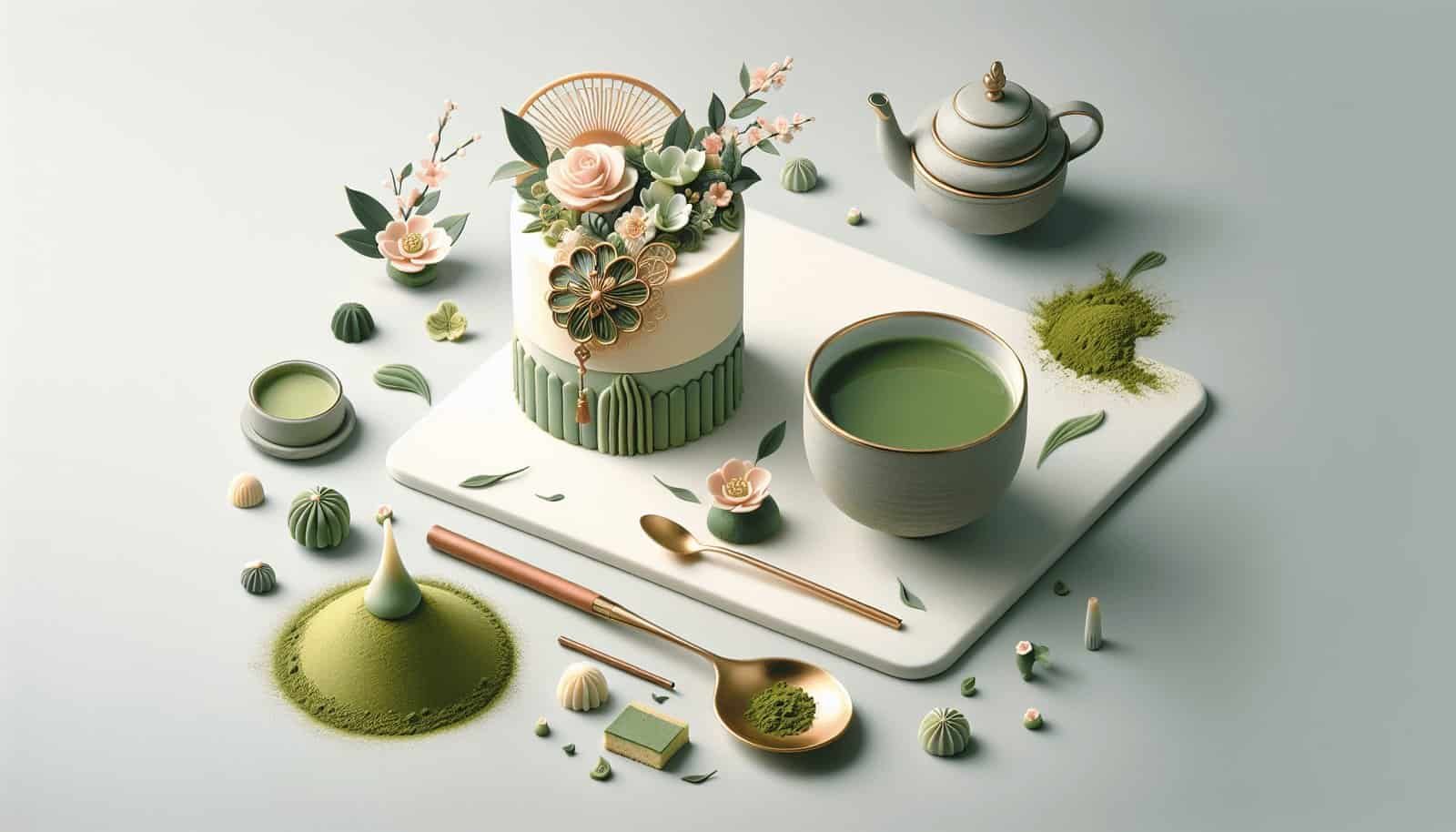Have you ever considered how traditional Korean teas, with their unique flavors and rich cultural history, could revolutionize your desserts? If not, get ready to be inspired. Combining these classic teas with modern dessert-making techniques can yield some incredibly avant-garde and delicious results.

Traditional Korean Teas: A Quick Introduction
The Rich History of Korean Teas
Korean teas have a storied history spanning centuries. They were originally consumed for their medicinal qualities and have since evolved into integral parts of Korean culture. The leaves, flowers, and roots used in these teas are often locally sourced and are celebrated for their health benefits and distinctive flavors.
Popular Varieties of Korean Teas
To better understand how to incorporate these teas into desserts, it’s worth getting to know the common varieties you might use:
- Green Tea (Nokcha) – Known for its earthy, grassy notes.
- Barley Tea (Bori-cha) – Mild, nutty, and slightly roasted flavor.
- Chrysanthemum Tea (Gukhwa-cha) – Floral, subtly sweet, and aromatic.
- Ginger Tea (Saenggang-cha) – Spicy and warming, with a hint of sweetness.
- Jujube Tea (Daechu-cha) – Sweet, almost date-like flavor.
Understanding these teas will help you see how they can lend their unique flavors to different types of desserts.
Techniques for Infusing Tea into Desserts
Steeping for Extracts
Steeping tea leaves, flowers, or roots in hot water is the simplest method to extract their flavors. Once you’ve made a strong brew, you can use this concentrated liquid in various dessert recipes, much like you would use a vanilla or almond extract.
Example: Use a strong brew of green tea to flavor a buttercream frosting, creating a unique twist on a classic cupcake topping.
Grinding into Powders
Another great way to use teas in desserts is to grind them into powders. This method works exceptionally well for sturdier ingredients like green tea or roasted barley.
Example: Grind green tea into a fine powder and mix it into a cheesecake batter for a beautifully colored and flavorful matcha cheesecake.
Incorporating as Syrups
Turning tea into a syrup allows you to add sweetness while infusing flavor. This can be done by boiling tea with sugar until it thickens into a syrup.
Example: Drizzle chrysanthemum tea syrup over a panna cotta for an elegant and refreshing dessert.
Avant-garde Dessert Ideas Using Korean Teas
Green Tea Ice Cream (Nokcha Ice Cream)
Green tea ice cream is a popular dessert in many Asian countries, including Korea. Its lightly bitter and slightly sweet flavor profile makes it a hit.
Ingredients:
- 2 cups heavy cream
- 1 cup whole milk
- 3/4 cup sugar
- 3 tbsp green tea powder
- Pinch of salt
Instructions:
- Heat heavy cream and milk in a saucepan until it’s almost boiling.
- Whisk in sugar, green tea powder, and salt until completely dissolved.
- Chill the mixture in the refrigerator for at least 4 hours before churning in an ice cream maker.
Barley Tea Panna Cotta
Panna cotta is an Italian dessert that translates perfectly with the nutty, roasted flavor of barley tea.
Ingredients:
- 1 cup heavy cream
- 1 cup barley tea, steeped strong
- 1/4 cup sugar
- 1 tsp vanilla extract
- 1 packet gelatin
Instructions:
- Mix the heavy cream, sugar, and vanilla extract in a saucepan and bring to a gentle simmer.
- Add the gelatin to the hot barley tea and stir until dissolved.
- Combine the tea mixture with the cream mixture, pour into molds, and refrigerate for at least 4 hours.
Chrysanthemum Tea Shortbread Cookies
Chrysanthemum tea can add a floral twist to simple shortbread cookies.
Ingredients:
- 1 cup butter, softened
- 1/2 cup powdered sugar
- 2 cups all-purpose flour
- 2-3 tbsp dried chrysanthemum flowers, ground into a fine powder
- 1 tsp vanilla extract
Instructions:
- Preheat oven to 350°F (175°C).
- Cream together the butter and powdered sugar until light and fluffy.
- Mix in the flour and ground chrysanthemum flowers.
- Roll out dough and cut into shapes, bake for 12-15 minutes until the edges are slightly golden.
Pairing Korean Teas with Different Desserts
The key to creating successful tea-infused desserts is pairing the right tea with the correct type of dessert. Here is a quick guide:
| Korean Tea | Flavor Profile | Best Paired With |
|---|---|---|
| Green Tea | Earthy, slightly bitter | Cream-based desserts, pastries |
| Barley Tea | Nutty, roasted | Puddings, custards, baked goods |
| Chrysanthemum | Floral, mildly sweet | Cookies, light cakes, frostings |
| Ginger Tea | Spicy, warm | Chocolates, caramel dishes, gingerbread |
| Jujube Tea | Sweet | Fruit tarts, sweet breads, muffins |

Health Benefits of Korean Teas in Desserts
Antioxidants
Green tea is loaded with antioxidants which help combat oxidative stress in the body. By incorporating green tea into your desserts, you’re adding a healthful component without compromising on taste.
Digestive Aid
Barley tea is known to be beneficial for digestion. Imagine finishing a meal with a dessert that not only satisfies your sweet tooth but also aids in digestion.
Anti-inflammatory Properties
Ginger tea is renowned for its anti-inflammatory properties. Incorporating this into a dessert like gingerbread adds not only flavor but also potential health benefits.
Tips for Creating Your Own Tea-Infused Desserts
Balance is Key
When infusing teas into desserts, the balance of flavors is crucial. Start with a small quantity of tea and gradually increase until you achieve the desired taste.
Experiment with Different Forms
Teas can be used in multiple forms like liquids, powders, and syrups. Experiment with these to find what works best with your dessert recipes.
Consider the Texture
Certain teas, when ground into powders or used in syrups, can alter the texture of your desserts. Be mindful of this and adjust your recipes accordingly.

Common Mistakes and How to Avoid Them
Over-Steeping the Tea
Over-steeping can make the tea bitter. Always follow recommended steeping times and taste your brew before incorporating it into your dessert.
Using Too Much Tea
Using an excessive amount of tea can overwhelm other flavors. Aim for a balanced, nuanced taste.
Ignoring the Original Flavor Profile
Remember, the idea is to enhance and not overpower. Pay attention to how the original flavor profile of the tea complements other ingredients in the dessert.
Conclusion
By now, you should have a plethora of ideas on how to bring the rich, diverse flavors of traditional Korean teas into your modern dessert creations. Whether you’re making a green tea ice cream or a barley tea panna cotta, these teas can add a surprising and delicious twist to your sweet treats. Balancing flavors, experimenting with forms, and avoiding common mistakes are all part of the journey to creating something truly unique and pleasurable. Get creative, have fun, and who knows? You might just invent the next big dessert trend.
Happy dessert-making!

